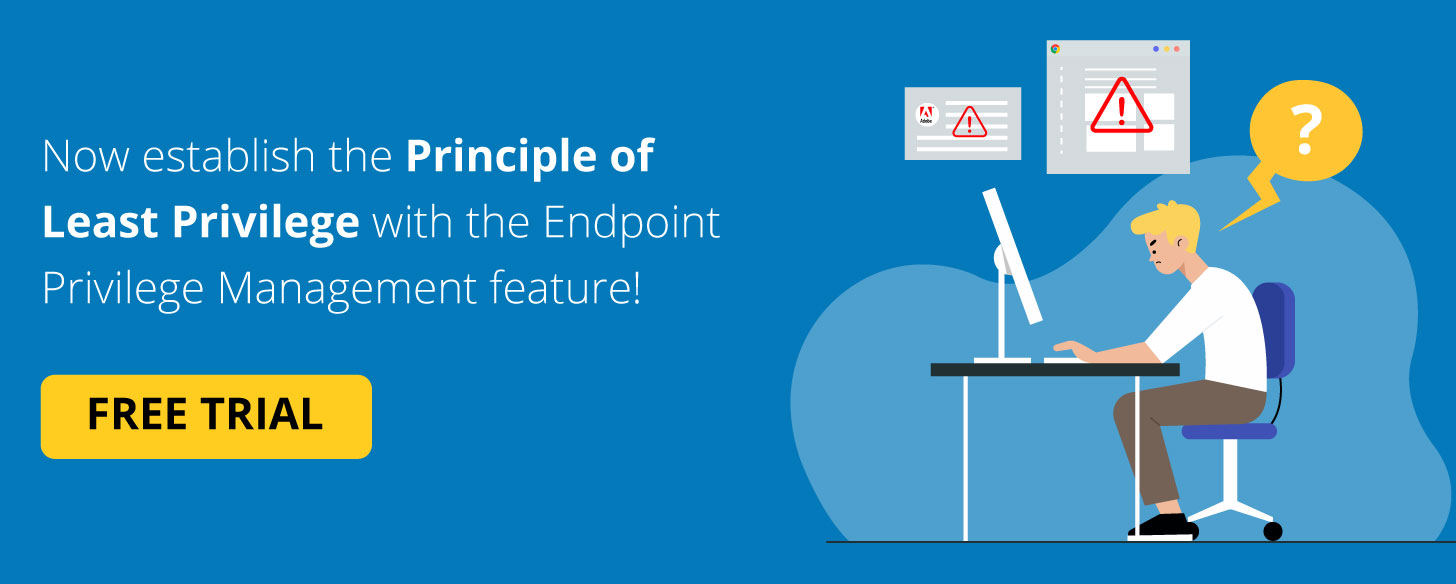What is the Principle Of Least Privilege (POLP)?
The principle of least privilege refers to the concept of lowering enterprise-wide privileges to the bare minimum required to perform an entity's job. It not only pertains to users, but also to systems, processes, applications, services, and other devices.
Why is Principle of Least Privilege (POLP) important?
Normally, privileges are assigned to users based on their role, department, hierarchical position, etc. Even though this is common practice, it may be doing more harm than we realize. According to a study, 99 percent of user privileges are unused and post a potential risk to the network. Along with being stringent about handing out privileges, authorities need to have a thorough understanding of the enterprise, the employees, and their job requirements before they assign privilege access.
How to implement the Principle Of Least Privilege (POLP) in an organization?
After quantifying and qualifying every employee's needs, the POLP recommends making most user accounts "standard" or "least privileged user" accounts.These least privileged user accounts will only have the privileges required to do every day business-critical activities, with no access to administer other network resources. Here is how an organization can implement the POLP:
- The first step in establishing the Principle of Least Privilege would be to identify where privileges have been distributed excessively.
- All the local and domain administrator accounts that exist in a network must be discovered. The organization must validate their existence by carefully analyzing the needs of the users that handle them. Unnecessary admin accounts must be removed instantly to ensure that the users don't have more privileges than required.
- The domain admin accounts possess admin rights over all the endpoints in the domain. Organizations must be vigilant while adding users to this group, and must strictly remove anyone who doesn't require total control.
- Local admin accounts have complete authority over the computer in which they exist. Being the most exploited privilege type, organizations must enforce scrutiny while dealing with them. Removing all unnecessary local admin accounts is the most crucial part of establishing the POLP.
-
Local User accounts created and added to the Administrator Group in a computer are considered as local administrator accounts. They can stripped of these privileges either by manually shifting them to the standard User group or by deploying scripts for the same.
To remove unnecessary admin accounts manually:
Edit local users and groups
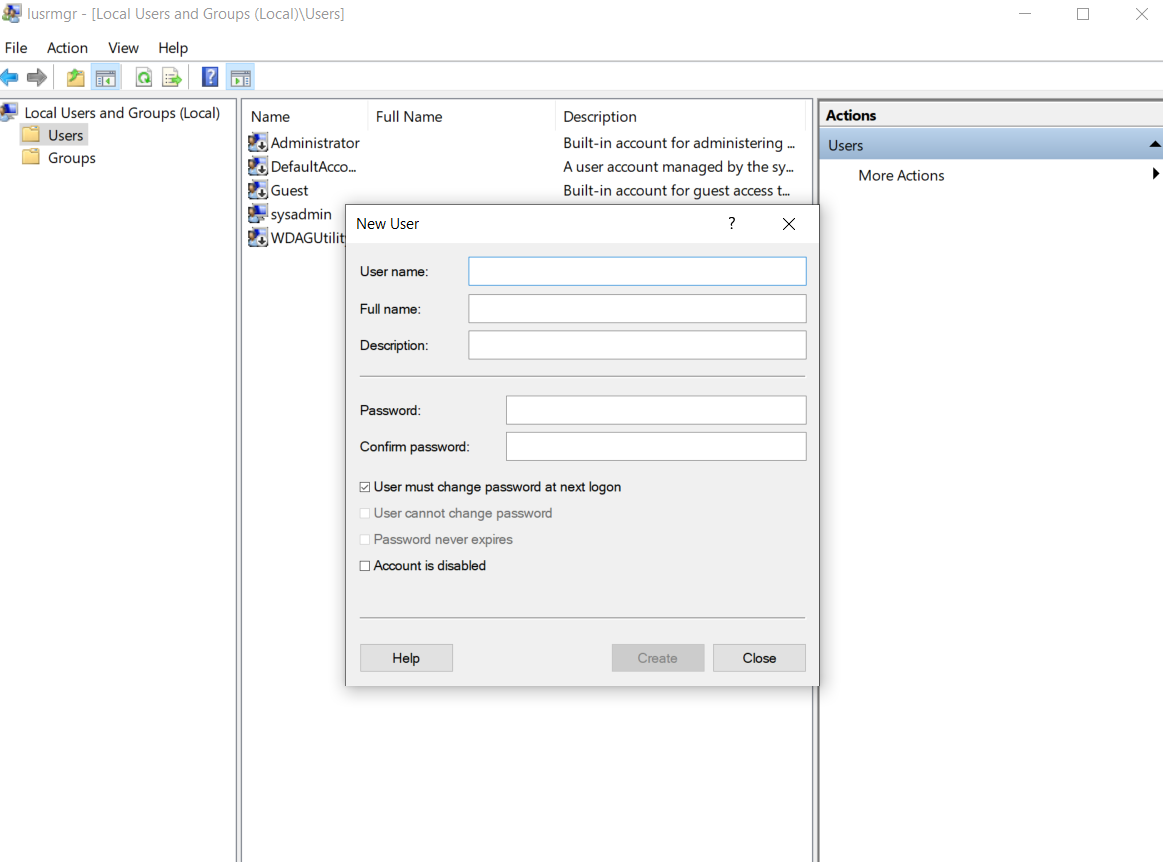
Identify and remove unnecessary accounts from the Administrator group and add them to the standard Users group instead.
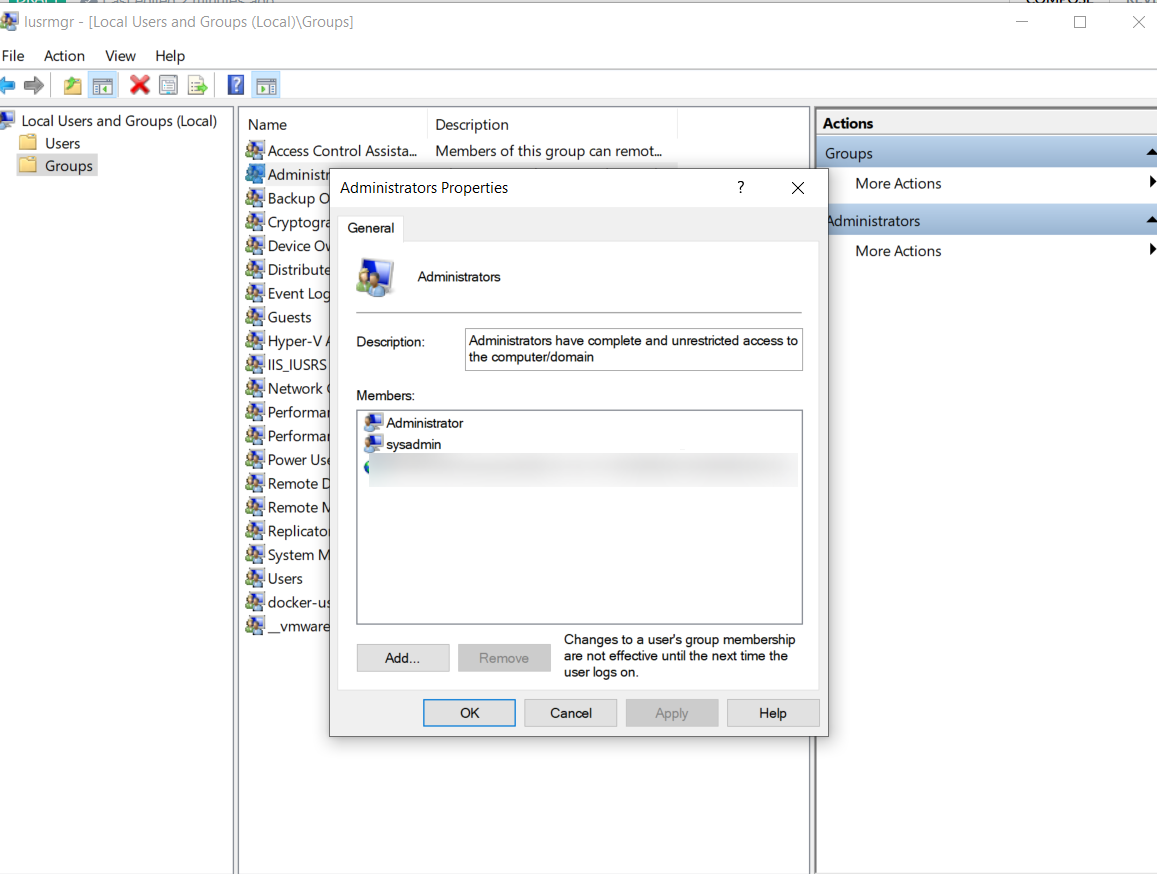
- However, locating and managing local admin accounts can be painstaking, as multiple such accounts can be created and hidden in each computer. Instead, organizations can employ tools that can discover and remove these accounts from the entire network, through a single console.
By removing these admin accounts, all employees will be left with only the bare minimum privileges required by them to execute their functions. However, it is not that simple. While being highly advantageous for an organization's security posture, the Principle of Least Privilege comes with its set backs.
Implement least privilege control without compromising on productivity
Many enterprises struggle with establishing POLP because of the consequences it can have on productivity. Having only limited admin accounts can improve security, but what happens when standard users accounts require administrator-level privileges for last-minute critical tasks? They either need to be provided with privileged admin credentials, or they needed to be added back into the Administrator group.
Along with being inconvenient and time-consuming, these re-elevated privileged accounts can pose major security threats as they are seldom revoked once those requirements are fulfilled. In order to ensure productivity without compromising on security, the POLP can be established with privilege bracketing enabled.
In this approach, instead of elevating the entire user's account, standard users will be given only the elevated privileges they require, on demand. The privileges given and the associated user behavior must be properly monitored. Once the requirement is fulfilled, the privileges would be automatically lifted.
What is privilege creep?
If privileges are not revoked once the demand is satisfied, users could stock up on privileges unnecessary for their daily activities. This accumulation of unnecessary privileges is known as privilege creep, and must be completely eliminated, as malware attacks targeting these accounts can bring down the entire enterprise.
Benefits of Principle Of Least Privilege (POLP)
- The vulnerabilities in applications have become almost as ubiquitous as the applications themselves. Even with patching software in place, exploits still continue to occur. However, since more than 80 percent of patch vulnerabilities in operating systems require admin privileges for a successful exploit, reducing the presence of admin accounts can reduce the possibility of such exploits.
- Even if an attack occurs, with the principle of least privilege implemented, malware will not be allowed to execute with admin privileges. This can substantially reduce the damage that could occur, and also prevent its further spread to other resources in the network.
- Additionally, 91 percent of cyberattacks occur due to spear phishing, and more often than not, non-technical lower-level employees are the ones who fall prey to them. Maintaining least privileges for these users helps reduce the impact of such attacks.
- Enforcing least privilege can also help enterprises adhere to multiple regulatory compliance. Even if it isn't needed for businesses to achieve such mandates, establishing the principle of least privilege will definitely work in fortifying the security landscape of the network.
How does Application Control Plus help in achieving the least privilege principle?
Application Control Plus does an essential part of privilege bracketing with respect to applications and their privileged access, which enables enterprises to establish the POLP without worrying about productivity drops.
-
Control application access
Application allowlisting and blocklisting features can also be leveraged to create trust-oriented lists, which govern who has the privilege to run which application.
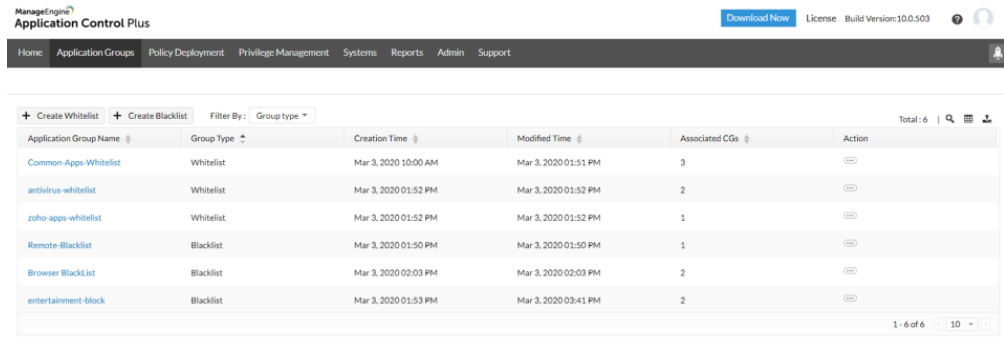
-
Application-level privileged access management
Once the POLP has been established by moving all the employees to the standard User Groups, Application Control Plus assures that none of the business critical advancements are hindered. Using the Endpoint Privilege Management, instead of elevating the users, privileges specific to applications can be elevated when required. This enables authorized users to run essential applications as administrators from their standard user accounts. With Application Control Plus you can:
Allow self-elevation of privileges to All Allowlisted Applications

Allow self-elevation of privileges to Specific Applications

Enable Privileged Access

-
Privilege revoking
Deleting the policies created after fulfilling the requirements can prevent the existence of privilege creep.
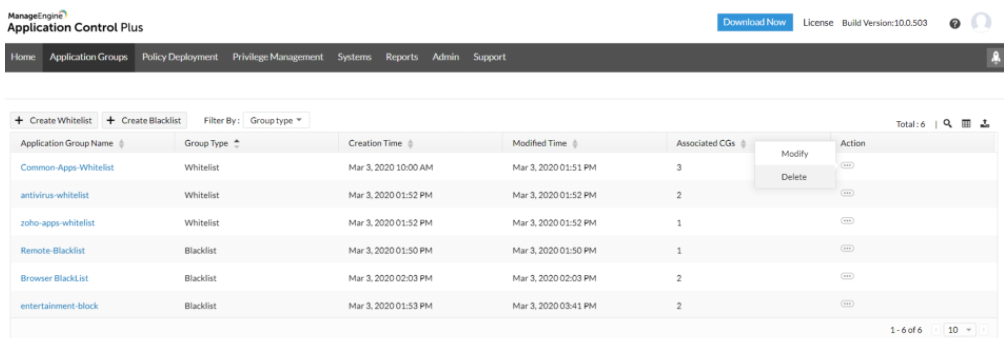
Try Application Control Plus free for a trial period of 30 days, and protect your network!

